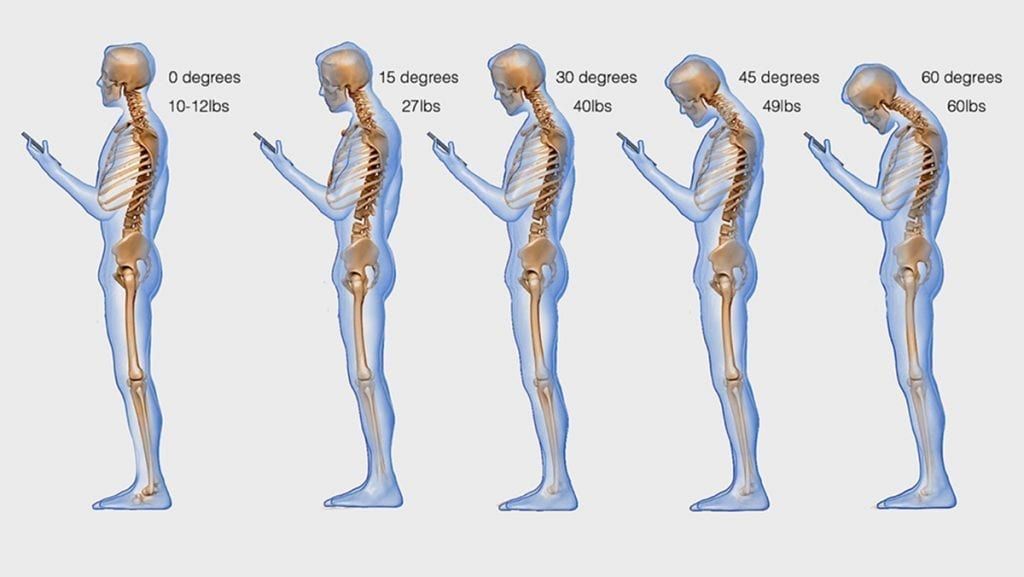"Text Neck" can occur from the added pressure on the cervical spine, when tilting the head forward for unnaturally long periods of time, typically when looking at a phone or other hand-held device.
In general, finding ways to keep the neck and body more active, rather than hunched over a mobile device, is best for the spine. While it may be easy to lose track of hours spent browsing on your phone, it's important to keep your body moving. It may be advised to schedule a few times per day to check texts and emails rather than responding consecutively or in real time.

- Raise your phone up. Position your phone (or other devices) closer to your eye level so your head does not have to be tilted unnaturally forward.
- Take frequent breaks. Spend time away from your phone or device, specifically avoiding any type of head-forward posture. If needed, use an alarm to set helpful reminders to take breaks from these devices.
- Stand up straight. Good posture, with the chin tucked in and shoulders pulled back, keeps the body aligned and in a neutral position that does not cause excess strain on the cervical spine.
- Arch and stretch. Arch the neck and upper back backward periodically to ease pain and stiffness.
- Exercise regularly. A strong, flexible back and neck are more able to handle extra stress. Low impact exercise can help achieve a stronger core. Activities like yoga, pilates, swimming, etc. are all useful options.

